Home >> What fungi are >> Reproduction >> Asexual Reproduction >> Conidia
FUNGI REPRODUCING ASEXUALLY BY MEANS OF CONIDIA
Conidia are asexually produced spores that are borne externally to the cells that produce them. This definition may be confusing, but it is only necessary to compare conidia with sporangiospores to see the difference. Sporangiospores are produced inside specialized cells called sporangia and remain enclosed in the cells until maturity. Conidia may be produced inside a cell (although not always) but at maturity they will be exposed to the external environment. There is some grey area here but for the most part our definition will hold up.
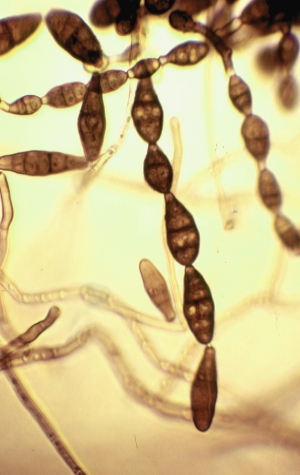
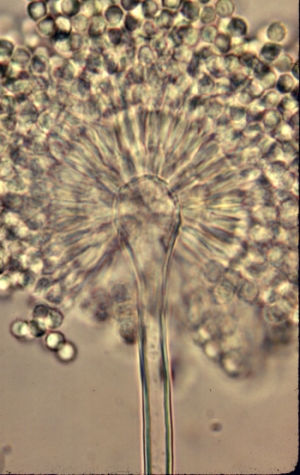
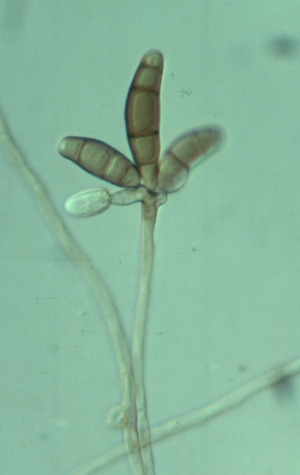
Above, left to right: Alternaria alternata, Aspergillus sp,. Curvularia inaequalis
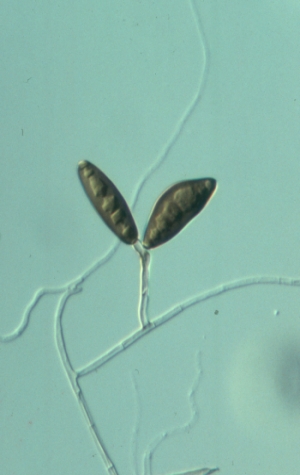
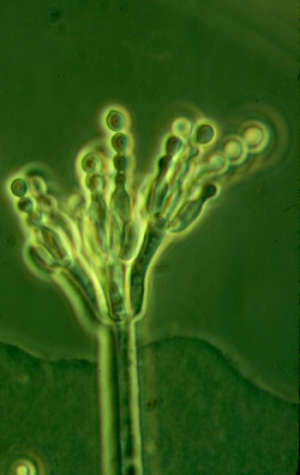
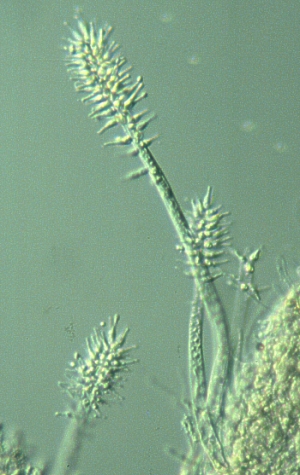
Above, left to right: Bipolaris sp., Penicillium sp., Harziella capitata
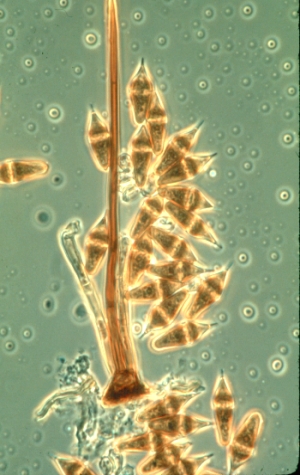
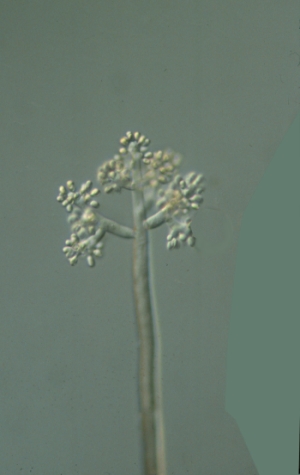
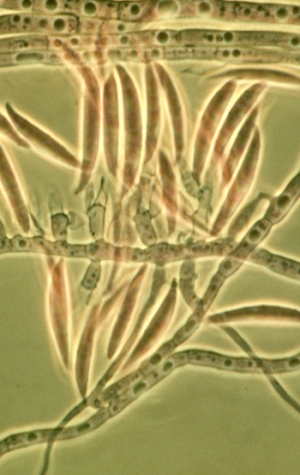
Above, left to right: Beltrania querna, Botrytis cinerea, Fusarium sp.
Asexual reproduction by conidia is a major part of many fungal life histories. The conidia of these fungi not only germinate and produce a new generation, they also function in dispersal and so have physical characteristics suited to the most efficient performance of this role. Fungi occur in a large variety of habitats and have an equally large variety of dispersal mechanisms, including conidial form. The pictures shown above may give you some idea of just how diverse these forms can be.
Conidial fungi are ubiquitous in nature and in human environments. They are used industrially in many ways and are of major value to humankind, but they also cause losses to crops and manufactured materials. They are also resposnsible for allergy, poor indoor air quality and may cause serious disease in humans and animals. Because of this it has been important to be able to identify them reliably. Identification is difficult and has occupied many mycologists throughout their carrers. Gradually scientists have come to understand features of conidial fungi that can be used to distinguish one from another. The basis of the modern system of classifying is discussed in greater detail in the section treating the asexual Dikarya, the subkingdom to which nearly all conidial fungi belong, and on our web pages on moulds.